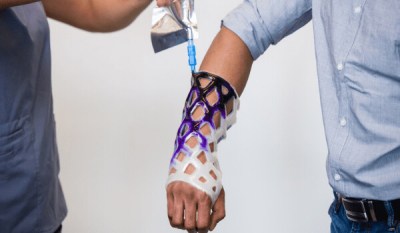As exciting as immunotherapies are in terms of fighting cancer, correcting autoimmune disorders and so on, they come with a major disadvantage. Due to the current procedure involving the use of a patient’s own immune (T) cells, this making such therapies rather expensive and involved for the patient. Recent research has therefore focused on answering the question whether T cells from healthy donors could be somehow used instead, with promising results from a recent study on three human patients, as reported in Nature.
The full study results (paywalled) by [Xiaobing Wang] et al. are published in Cell, with the clinical trial details available on the ClinicalTrials.gov website. For this particular trial the goal was to attempt to cure the autoimmune conditions of the three study participants (being necrotizing myopathy (IMNM) and diffuse cutaneous systemic sclerosis (dcSSc)). The T cells used in the study were obtained from a healthy 21-year old woman, and modified with chimeric antigen receptors targeting B (memory) cells. Using CRISPR-Cas9 the T cells were then further modified to prevent the donor cells from attacking the patient’s cells and vice versa.
After injection, the CAR-T cells got to work, multiplying and seeking out the target B cells, including the pathogenic ones underlying the autoimmune conditions. This persisted for a few weeks until the CAR-T cells effectively vanished and new B cells began to emerge, with a clear decrease in autoantibodies. Two months after beginning treatment, all three participants noted marked improvements in their conditions, which persisted at 6 months. For the woman with IMNM, muscle strength had increased dramatically with undetectable autoantibody levels, and the two men with dcSSc saw scar tissue formation reversed and their skin condition improve massively.
It remains to be seen whether this period of remission in these patients is permanent, and whether there any side effects of CAR-T cell therapy. We previously reported on CAR-T cell therapies and the many promises which they hold. Depending on the outcome of these early trials, it could mean that autoimmune conditions, allergies and cancer will soon be worries of the past, marking another massive medical milestone not unlike the invention of vaccines and the discovery of antibiotics.



















